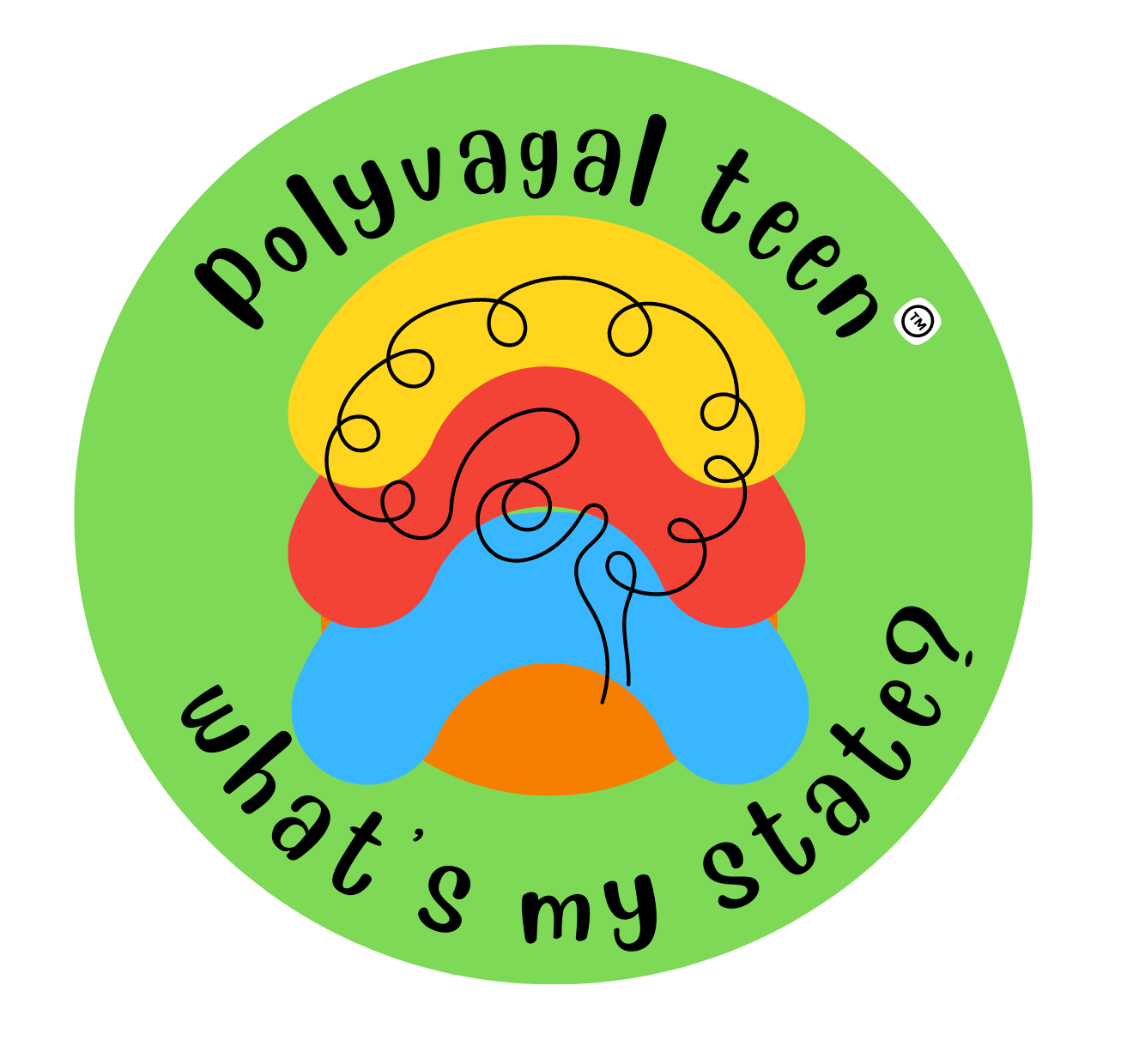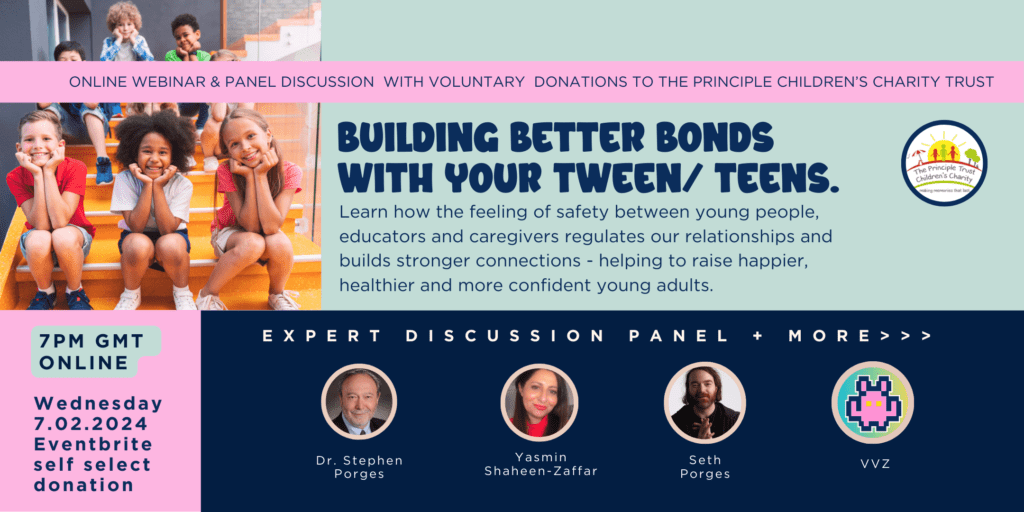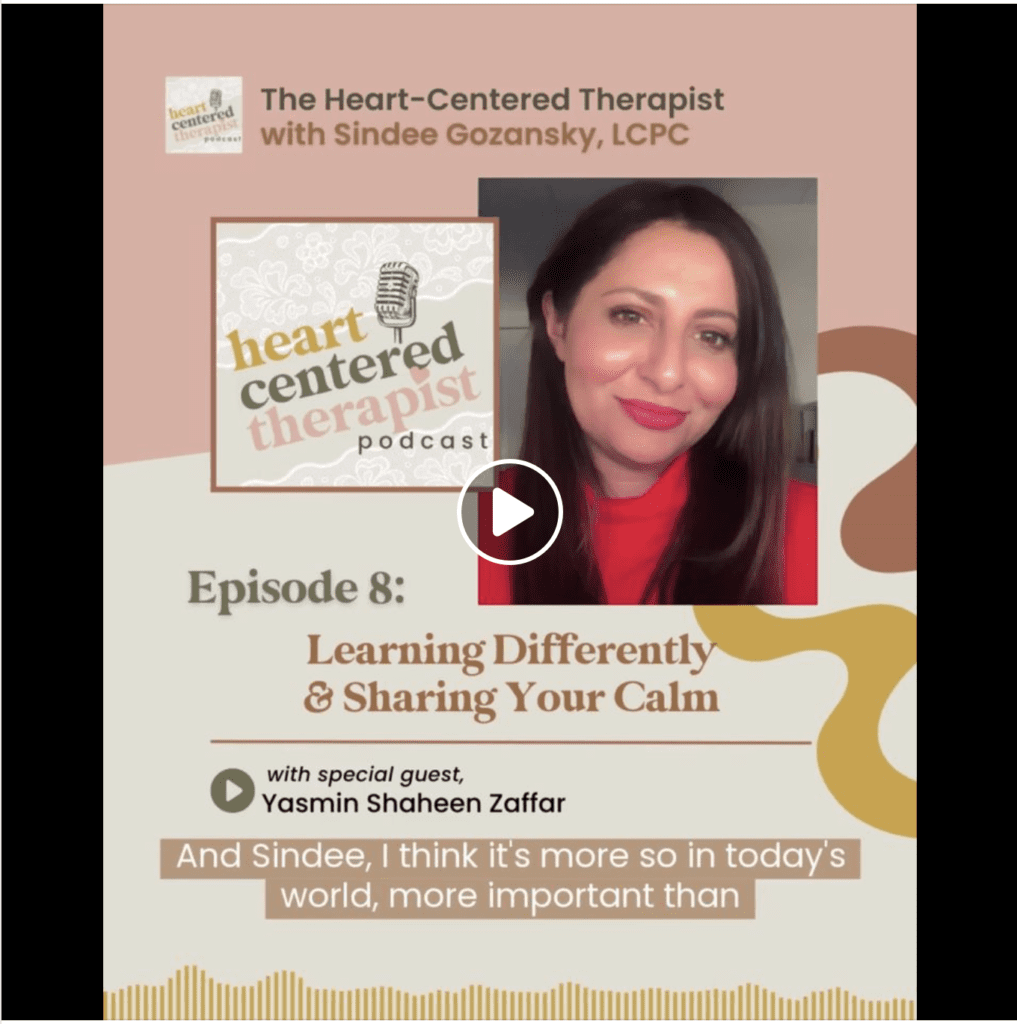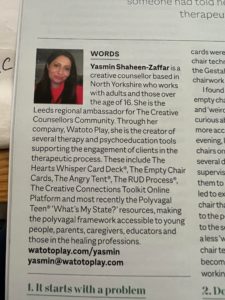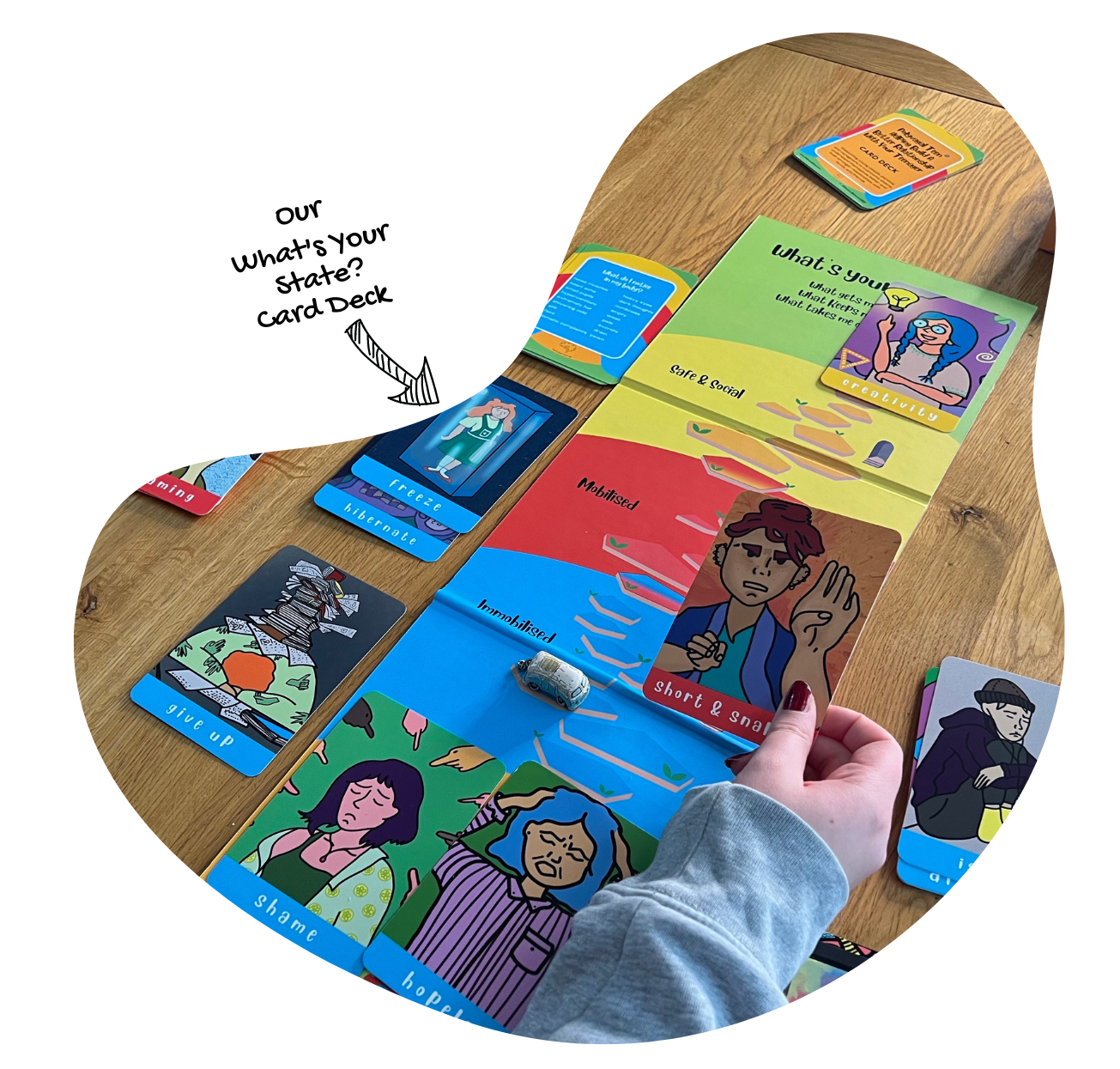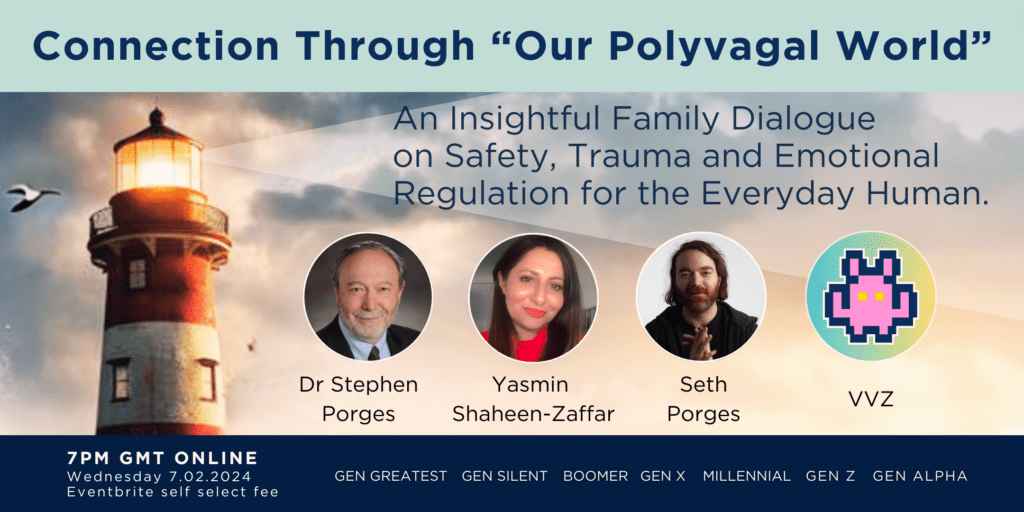Please Could You Support A Small Business and give us a review to let others know what you think of our products & if you found them helpful?
Hey, I’m Yasmin the founder of Polyvagal Teen, and I’m on a mission to help create generations of young people and adults become polyvagal aware.
You might be thinking, what does it mean to be polyvagal aware? Using the polyvagal Teen card deck and the Polyvagal Teen Track and our resources and programs, we are helping young people and adults understand their nervous system, especially their autonomic nervous system, how it reacts to their inside and outside environment.
As they begin to understand their nervous system, they will begin to recognise how their behaviors are connected to their emotions and sensations in their body. Through practice and exploring their nervous system, they will become more attuned to what they are feeling in their brains and bodies and not seeing.
Their brain and body is a sep, a separate organs, and not viewing and understanding that connection between their brain and their body feeling more connected. Becoming polyvagal aware. This is exactly what I mean by becoming polyvagal aware. The word polyvagal has been taken from Dr. Stephen Porges Polyvagal theory.
It really feels important for me to highlight. The key word here is RECOGNISE to help young people and adults recognise how they are feeling in their brains and bodies.
Because let’s face it, the goal is not to always have a regulated person. I mean, that would be near enough impossible to be regulated like a hundred percent of the time.
I believe the very first step is helping them to connect with their body. To connect with that energy inside their body, those sensations to recognise that their hand is shaking or that their heart is thumping or that their leg is kicking. By recognizing they will increase their awareness, and that’s when change happens.
So we want to take these behaviors that are outwardly and help young people and adults link their behaviors them to what they are feeling in their body and see that as a sign, see their behaviors as clues of what’s going inside, going on with their nervous.
It’s also by recognizing they will increase their awareness, and that’s when change really takes place.
It’s important to remember that awareness. It develops through a practice. So this is something that we, we would be brought up or touched upon in each session if a therapist or over a few sessions or a time span. When working with adults who have children or teens, they would be encouraged to integrate it into their day-to-day routine in some way or another.
Making this practice a ritual, a routine for me, the most exciting part is to help young people understand how their ANS works, and we’re talking about their autonomic nervous system. And we are talking about their automatic, and we are talking about their autonomic nervous system.
Instead of talking about behaviors as bad or disruptive or giving them labels from, for example, from the DSM5 5, What we are actually doing is helping them understand that their nervous system is actually protecting them.
And sometimes they may do things not because they are a loser or a bad child or unlucky, but they are feeling and sensing their experience of how their nervous system is reacting to their environment.
That feels so important. In fact, through understanding Polyvagal theory, we are not pathologising their behaviors.
We are viewing their behavior as a normal response to their environment. To me, that’s empowering. We are empowering them to connect with their bodies, their nervous system, to understand themselves better and to connect with each other. We’re not pathologizing.
All these resources have been created to promote polyvagal, help create generations of young people that are polyvagal aware.
So that’s what it means to be polyvagal aware, to be connected.
When you get your box of cards and you first open them, you will notice the cards are color coded into four different colors.
- Yellow,
- Red ,
- Blue and
- Orange – the smaller pile.
Let’s firstly take a look at the yellow, red, and blue. This is one of the foundations of polyvagal theory.The different colors. These represent the three behaviors of categories of behaviors that the nervous system is divided into. There are four more categories. But for this instance we are keeping things simple and focussing on the main 3
We are going to keep it really simple and we’ll call these categories the different states. That’s where we have derived the phrase, what’s your state?
In each pile you have images of behaviors that a occur in that particular state.
Remember, we have really simplified this. There are mixed states, but to start with, we will refer just to the three states.
So yellow cards, the behavior, the behaviors occur in safe and social state.
Red cards in the mobilized state and the blue cards, the immobilised state.
I usually explain that our behaviors are giving us small small clues of what we are feeling or thinking and because our nervous system works AUTOMATICALLY
Sometimes we need to become investigators or even private detectives understanding, deciphering and unlocking the code of what our and others’ behavior is trying to tell us it’s a mission we are going on to understand ourselves and others better and what happens between us also.
And if we understand better, then we can communicate better. And the end result is we all get on better and have much happier, and have a much joyous time.
As you can see, I have removed the scientific wording from the cards in my opinion when explaining the concept we don’t really need to use the scientific terminology. Remember I’m talking as a person with ADHD, dyslexia and dyspraxia.
Obviously, as a therapist you may want to know for your own professional development, or some clients may want to know what the scientific terminology is.
But what I always suggest is when you are first introducing the cards – to keep it really simple, and then you can layer upon layer knowledge slowly. I think the simpler the better.
Especially at the start else, they may be in danger else they may be in danger of just switching off or just telling you they understand when in fact they may not. As therapists or parents what we are looking for is connection, not disconnection.
So now let’s jump over to the next video to take a closer look at each set of the cards. Looking at the safe and social state, that’s the yellow ones. This is the state, when we feel safe and connected.
We experience behaviors and feelings such as curiosity, playfulness, creativity, socializing. We are playful. We feel joyous, and generally, life is good in this state.
Now what Polyvagal theory tells us is that the red and blue states are defensive states. So when we feel as if we are under threat or some form of stress, either physical or emotional or psychological, our autonomic nervous system (which I’ll call our ANS) jumps into action.
Keyword here AUTOMATICALLY to protect us. This means it is often kicked into action as quick as a flash without us realising SUBCONSCIOUSLY as it senses we are in some type of danger.
There are two types of defensive states.
- The red cards are the mobilised defensive state, as the name suggests, MOBILISE – this is usually a high energy state, so behaviors such as throwing, hitting, fleeing, rage, verbal abuse, anxiety are can be common in this state.
- The second defensive state, the blue state is called IMMOBILISED you may guess it means meaning not moving. These behaviors or feelings in this state are low energy, so behaviors such as feeling isolated, powerless, hibernating, fainting, freeze.
- Then there’s a smaller pile of cards, the orange. The orange cards. These are some behavior cards that teens can relate to. We are growing this collection of cards.
What you’ll soon realise it’ll just, you will find two sets of each unique image. In the next video, I’ll go into depth of why we have two sets of cards and how they can be used.
Polyvagal theory is a theory that explains how our autonomic nervous system responds to stress and trauma.
It has three founding principles.
The first neuroception is a process by which our brain detects and evaluates potential cues of risk and safety in our environment. It is an automatic subconscious process that helps us to determine whether a situation or person is safe or dangerous. This evaluation happens without us being aware of it and it helps us to decide how we should respond.
The second founding principle states that there are three different responses to stress and trauma which follow an evolutionary hierarchy. This hierarchy is known as the polyvagal hierarchy and consists of three levels –
- Freeze
- Fight or Flight.
- Safe and Social
The third is co-regulation. This is a process that occurs when two people interact with each other in a supportive way.
It involves both parties actively supporting and understanding each other’s emotional states, helping to manage stress and create feelings of safety. According to polyvagal theory this connection between two people can help regulate their bodies autonomic nervous systems. Allowing them to be more relaxed and better able to handle stressful situations in the future.
Co-regulation can also help people develop stronger connections with one another. Or trust as trust and communication are essential components of the process – being an effective strategy for managing stress that involves mutual support and understanding between two people.
I wanted to find a way that made it simple to explain polyvagal theory, but also a process for me to go through with my clients. So, what I ended up creating was the. The R.U.D process. And it’s three simple steps to making change.
Step one. The R stands for recognise. We begin to get to know your nervous system by recognising your states linked to your behaviors.
Gaining awareness is key. the first step would be to start working towards recognising what states. you are in throughout the day,that can be through journaling. Or having a weekly journal of key moments and just taking a look at what states you were in throughout your day or through your week.
And also beginning to recognise what are the sensations in your body? Because it is those sensations that will tell you. What your nervous system is doing. So you can work on recognising states and sensations. It’s something that you and your clients would do. As a ritual or a routine. It’s not something that you would just do as a one-off you would incorporate it somehow into your lifestyle.
The second step. In the RUD process U is to understand. Understand our states and behaviors better. We can do this by just asking three simple key questions. Being curious and exploring.
If you have a particular challenge. Or there’s a behavior that you may want to work on or even change. So the three simple key questions.
- What gets me here?
- What keeps me here? And
- What takes me out of here?
Now these questions, when processing or reflecting creativity really helps the process.
They can be as simple as journaling to doodling, to taking a walk outside and collecting leaves or making a Mandela. Or even using the sand tray and creating a story. And. Using these as prompts for making your sand tray. So you can be really creative or you can keep it really simple.
You can also create a photo collage of a question such as what gets me here and keep that on your phone. That works quite well with young people.
And it’s that gathering of information when doing it creatively and also with gentle curiosity. It will help with gaining those light bulb moments.
Then step three. Is D for diffuse once you’ve brought into your awareness, how your nervous system reacts to different encounters and stressors.
You can begin to work on finding strategies for prevention. Grounding or diffusing the behavior. Again, exploring with curiosity on finding strategies. work on finding strategies for diffusing those sensations in the body that are being unhelpful.
Personally, I have found Quigong to be a an amazing practice to shift that energy and that stuckness.
I think that’s really very individual to the client and their preference how they choose to diffuse the unhelpful energy. So from doing short exercises, to strategies, to prevention.
So that is step three and that’s a really simple overview of the R.U.D Process and how you can incorporate polyvagal theory into this process. So you have three simple steps that you can follow again and again. Thank you.
